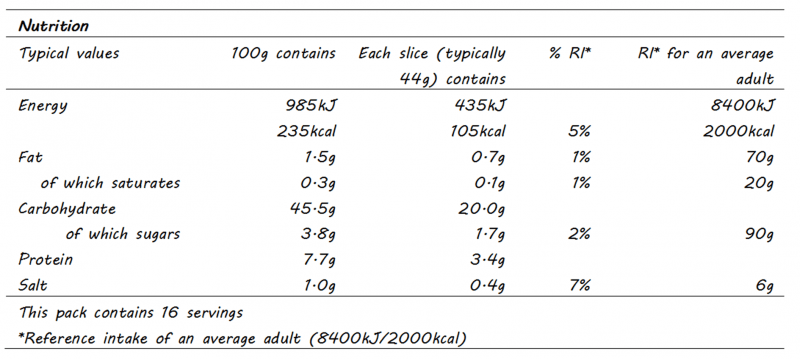Health & Nutrition
Health & Nutrition
Looking at labels
What are food labels and why use them?
Food labels provide a lot of useful information about what foods and drinks contain, provided you know where to find the information you’re looking for.
The laws around food labelling in the UK are based on European Union (EU) legislation. They outline what information must be provided to you, as a consumer, when buying food, and how that information must be presented. Food labelling is required to be clear, easy to read and not misleading, so that you can be better informed about the foods and drinks you are going to buy.
Most prepacked foods in the UK must provide nutritional information on the label.
NOTE: The nutrition labelling rules do not apply to:
- Food supplements
- Natural mineral waters

Using these food labels when shopping can help you make healthier choices, for example, by choosing foods and drinks that are:
- Lower in fat and saturated fat
- Lower in sugar
- Lower in salt
- Lower in calories
Back of pack labelling
The majority of pre-packed products (by law) provide a nutrition label on the back of pack.
| By law back of pack nutrition labels must include: | This will be displayed: |
| Energy | …in calories [kcals] and kilojoules [kJ]) |
| Fat content | …in grams (g) |
| Saturated fat content | …in grams (g) |
| Carbohydrate content | …in grams (g) |
| Sugar content | …in grams (g) |
| Protein content | …in grams (g) |
| Salt content | …in grams (g) |
This back of pack information must be displayed as per 100g or 100ml of the product, but may also be additionally displayed as per portion. Generally, this information will be displayed like this:

On top of the above 7 values that must be on a nutrition label by law, you might also see extra voluntary information on:
- fibre;
- starch;
- mono/poly-unsaturated fats;
- polyols; (used as sweeteners)
- any vitamins or minerals.
As you can see in the image below, there is additional nutrition information provided on fibre, vitamin B1 and folic acid.

Front of pack labelling
In the UK, repeating nutritional information on the front of pre-packaged foods and drinks is voluntary (under the Food Information Regulation) but most of the major supermarkets and many food manufacturers provide this.
The information has to be displayed as either:
- Energy (kJ and kcal) only OR
- Energy (kJ and kcal)
- Fat
- Saturated fat
- Sugars (total sugars)
- Salt
This information will be written per 100g/100ml, per portion or both.
The government’s recommended format is red, amber, green colour-coding and percentage Reference Intakes, or as you may better recognise it – traffic light labelling!

Using front of pack labels is really useful when you want to quickly compare different food products.
Using the government scheme, a combination of colour coding (traffic lights) and nutritional information is used to show, at a glance, whether a product is high (red), medium (amber) or low (green) in fat, saturated fat, salt and sugars, and how much energy (calories and kilojoules) it provides. This can help you make comparisons between foods to allow you to make a healthier choice; for example selecting a sandwich for lunch.
Top tips about traffic light labelling
What does green mean?
If there is mostly green on the label, then this is telling you straight away it is low in that nutrient and a healthier choice!
What does amber mean?
This means the product is neither high nor low in the specific nutrient. You can eat foods with all or mostly amber on the label most of the time.
What does red mean?
Red doesn’t mean you cannot eat the product, but means the food is high in fat, saturated fat, salt or sugar. We should be cutting down on foods with lots of red on the label, or if they are eaten, to have less often and in small amounts.
So when choosing between similar products, try to opt for more greens and ambers, and fewer reds!
Alongside these traffic lights, the label generally shows the amount of these nutrients in a portion of the food or drink and the percentage of your reference intake (RI) a portion of the product provides. In some cases, where there isn’t much room on the label, just energy values will be displayed but the full nutrition information will be available on the back of pack.
What are the guidelines for high, medium and low on a front of pack label?
The table below shows how high, medium and low levels of fat, saturates, total sugars and salt in foods are classified for front of pack labels (there are different levels for drinks; see more info here). These levels have been decided by the UK government. The ‘per portion’ in red is used where portions are 250g or more.
